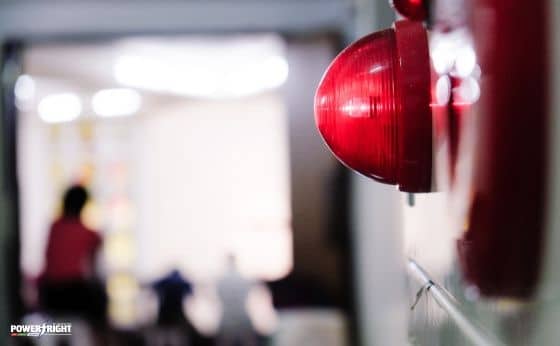
Every year fire is responsible for causing millions of euros worth of damage and loss in Ireland and sometimes leading to death. To actually understand the way fire alarm systems work, first, let's have a look what fire alarm system is, what key elements it consists of, the way in which home and commercial systems differ and how simple or complex such systems can be.
A fire alarm system is an active fire protection system which controls all of the fire alarm modules in a building. It's made up of alarm initiating units (smoke detectors and heat sensors), alarm notification devices (sirens or devices which produce loud noises), fire control units (sprinkler systems or fire extinguisher systems), power supplies and also wirings.
In residential properties, fire alarm systems are typically relatively small and simple. They will commonly consist of one or two smoke or heat detectors fitted in a central location or near to areas which present an increased risk of fire, for example, kitchens.
Where there are compartmented areas, such as a block of flats, smoke detectors are going to be needed to be fitted in each flat and ideally, these should be interlinked, so that in case one alarm is triggered, then the rest of the alarms in the building will sound to warn people of the danger.
Fire alarm systems in commercial buildings are often much bigger and more complex than those used in residential applications. With larger sized buildings, for example, large office blocks or retail areas, fire alarm systems will require careful design and planning, with a complete fire risk assessment taking place prior to the installation process.
Fire detectors will need to be spread out throughout buildings, with several in each main area as required to provide complete coverage - to ensure that wherever a fire starts, the alarm will be able to immediately alert people to the danger.
All fire alarms or sub-components of such need to be interlinked together with a central control panel, which should preferably be monitored around the clock. These systems should preferably be addressable so that the specific location of the fire could be pinpointed.
In order to provide additional support, in some types of residential properties, there may be monitored alarm systems fitted that will instantly notify the fire brigade in case the alarm is triggered. This is particularly beneficial for protecting property whilst the occupants are away.
In general, however, monitored alarm systems are actually a far more typical feature in commercial properties and would only be chosen for residential applications under special circumstances.
The fire alarm system could be set off automatically by smoke detectors, heat detectors or even manually. These sensors are set to detect specific levels of heat or smoke which often may be an indication of fire. A loud bell or a siren in some cases accompanied by blinking or flashing lights for individuals who have hearing problems, blasts to alert occupants inside the building.
In a fire alarm system, there is always a smoke detector to identify fire or smoke. So how does a fire alarm system work by way of a smoke sensor?
There are 2 kinds of smoke detectors. These are the optical detector and the ionization detector. The optical smoke detector detects the smoke by using light sensors (infrared LED). When smoke particles pass thru the chamber of the optical detector, it scatters light that triggers the alarm. Inside the ionization detector, in case the smoke particle enters the chamber of the ionization detector, it will reduce air ionization within the chamber of the ionization detector and activates the alarm.
Any time you assess fire safety at your commercial property, be sure you get in touch with your local fire authorities to ensure that you're up to fire codes and regulations. Check that you have the appropriate number of fire extinguishers in optimal areas and your fire suppression solutions and sprinkler system meet all the requirements.
Power Right is always available to discuss fire safety and security options for your business. For a free no-obligation quote please dial 1800 938 881 and one of our Fire & Emergency Lighting Advisors will be glad to assist you.